Yeah, starting with the profanities right off the bat – that’s the way to scare off the little old ladies. But if you managed to make it all the way through the title without swooning, you’re invited to read on, because not enough people really understand this issue.
I’ll lead off by saying that I worked in animal shelters for years, and animal welfare programs even longer – some of them quite progressive. I was also responsible for doing a lot of research into methods and improvements, which included networking with some of the most knowledgeable and advanced people in the business. One of the shelters that I worked for was in the running (multiple times) for the Humane Society of the United State’s “Standards of Excellence” award – not a winner, I admit, but when you realize that there is generally at least one animal shelter for every county in the US, including those with much bigger budgets than ours, I think we were doing pretty damn good to be in that realm.
So I feel qualified enough to tell you: the idea of a “no kill” shelter is a complete myth – at least, in the manner that everyone imagines it to be. And it’s going to remain a myth, at the very least until attitudes go through a huge change in this country, but also as long as the goddamn phrase even exists. It actually works against the very idea, a self-defeating concept, and I don’t expect you to take my word for it – look it up yourself. I’m not the first to express these thoughts.
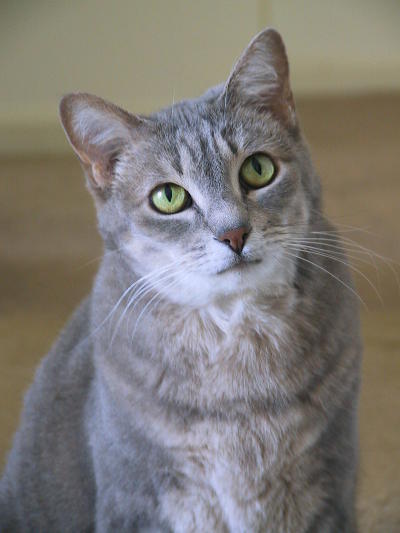
Let me start by painting the picture. The shelter that I worked for the longest was, as far as anyone would be able to calculate easily, ‘average’ for North Carolina – servicing a medium-sized college city, but with plentiful rural areas. And we took in about 7,000 animals a year – that’s about 20 a day. Very few days could be considered ‘average’ of course – we might range from less than 8 animals on some winter days to over 50 in the height of the breeding seasons. Yes, a day. Mind you, these were of all types – everything from family pets surrendered because of a move (or much more likely, behavioral problems) to impounds from cruelty investigations. Mostly strays of course, some of which were obviously lost, owned animals, but more than enough were feral animals that had never had contact with people. I fostered several borderline cases, feral cats that came in young and stood a chance of being able to acclimate to humans and become pets. My little rule was, ‘about four months’ – if the cat was older than that, the chances of taming it down to become a pet were extremely slim. One of my cats, that I owned for sixteen years, was one such case – not at all sociable around strangers, and still capable of hissing at me neurotically if I entered the room too suddenly. She became mine when I knew that she couldn’t be returned to the shelter and be considered ‘adoptable.’
And that’s a very loaded word, ‘adoptable’ – it implies a demarcation that really doesn’t exist. There are levels of appeal for every animal, and it’s different for every human viewing them. But it’s safe to say that some animals simply would not, cannot, fall into that realm – too many were actually dangerous, and it would have been irresponsible to even try. Others were ill, often communicably so, or might have behavioral/mental issues. So we can start considering the idea that some animals just aren’t adoptable, and retaining them would take space from animals that were. Remember, 20 animals a day on average – that means that, barring those unadoptable animals, that’s how many have to be placed in homes a day to avoid euthanizing animals. For just one county. That’s a pretty busy program.
And I will sideline here to say, ‘euthanize’ is the word of choice (and frankly, respect) among sheltering personnel. Call it semantics if you like, but in a lot of cases, the subtle meanings of the words we use do have an effect, which is why the very phrase “no kill” even exists (more on this is a bit.) When we euthanized animals, and yes, it was a lot, it was done with an overdose of anesthetic injected intravenously, with personal attention and care, for every case where it could be safely done. Feral cats, for instance, had to be restrained pretty thoroughly to avoid danger to the handlers – and still, it was never done cruelly or even thoughtlessly. Nobody in there wanted to do it – we never would have hired anyone that did – but it was a duty and necessity of work in a shelter. The people that were there, that work in any shelter, are the ones who care about the animals and want to make a difference. And often enough, that means doing the tough parts as well.
So now let’s talk about kenneling, especially long term. First of all, with that number of animals coming in, how many cage spaces, do you think, it would require to house all ‘adoptable’ animals until they’re placed? No, wait – let’s correct a small problem in dealing with numbers, because the kennels didn’t magically empty out on January 1 to start counting again. Throw in a standard wait period for every stray animal – in our case five working days – to allow an owner time to show up, regardless of the appearance, health, sociability, or what-have-you of the animal, so even determining ‘adoptable’ by any standards that you like has to come after that period. Now, here’s a simple metric: it doesn’t matter how many cage spaces you add, because all it does is extend the period of time, from the shelter’s opening, that the kennels become full. Once full, you are, yet again, dealing with no euthanasia only by having the same number of animals go out the door as come in. That’s the only number that matters.
Which is, partially, where the claim of “no kill” shelters comes in. None of them, at all, take in every animal required for a given county – they decide which animals they take in, and can refuse anything they deem unadoptable, and may even have a waiting list for those that are still considered adoptable. As part of my job when a new shelter was going to be built, I did extensive research into such shelters to see how they did it – and found that they didn’t. Every one of them existed alongside another “kill” shelter, that in many cases took the overflow directly from the “no kill” shelters when they couldn’t place the animals. So, yeah, the meaning of “no kill” in such cases simply means, “not by our hands,” and not, “the animal is still alive.” Sound like marketing bullshit to you? Yeah, it does to me too.
My study took place in 2006, I believe, when there were two “no kill” shelters that were triumphantly championing their own cause – one was San Francisco, a very distinct city area with very limited opportunities for feral animals and ‘barnyard’ breeding, and it existed right across the street from the county “kill” shelter! The other was Ithaca, which shipped its overflow animals better than 500 kilometers out to Long Island each fucking week to manage their numbers. Hey, I’ll admit that maybe, in the interim, some county has found a way to make it work, and perhaps there really is a “no kill” shelter out there that actually handles all of the animals that a county produces without unnecessary euthanasia – but even then it’s going to be bullshit, because not every animal is adoptable. Period. And of course, when you include that keyword, then you’re free to define ‘adoptable’ as you like, right? I’m not being disingenuous; this happens all the time, including at another shelter that I worked for.
But okay, let’s get back to kennels. Even ignoring the whole idea of the sheer numbers, let’s talk about long-term care. We all know that the ideal situation is a loving home, which means plenty of space and exercise and good food and medical care. Super. That’s not what any kind of kennel can provide – even the expensive boarding kennels, charging a premium rate while the owner goes on vacation, cannot meet these criteria easily – it sure as hell isn’t happening on any county budget or any nonprofit structure. The overwhelming majority of shelters, regardless of claims, house their animals in relatively small spaces, with very limited outside access (forget about gamboling on the lawn,) limited social interaction with other animals or people, and rudimentary food and medical attention. Think ‘jail,’ only with less yard time and interaction – ‘solitary confinement’ is a bit closer to the mark. And it doesn’t matter what intentions are, or how dedicated the staff is, because there are a lot of animals to take care of. And that staff wants to pay their own bills (the selfish fucks) so add that into your budget. Yeah, volunteers, I know – I’ve worked with volunteer programs for years, so let me give you the real numbers. About ten percent of volunteers are worth the time – the vast majority just want to “cuddle” or do “fun” things, so good luck finding dependable people coming in to clean up shit for free. Meanwhile, they all have to be trained to do things right, and who’s going to do this? Believe me, we did a lot with volunteers, but they require a ridiculous amount of effort and the turnover is much higher than fast food workers.
Now let’s talk about disease. Hospitals (human ones) are known for being on their game, and the bare facts are that a lot of communicable diseases actually get spread through hospitals – despite fierce disinfection routines, that’s simply the place people go when they’re sick. Shelters are even worse – at least in hospitals, the majority of patients shit into a toilet, or are isolated from others when they have stuff that can be spread through the air. In shelters and kennels, it becomes ridiculously easy, no matter how fierce your disinfection routine is (and even if every one of your volunteers is doing things exactly as told,) to have illnesses spread throughout, at least a room or wing, but sometimes throughout the entire shelter. So, medical treatment. Yeah, imagine the veterinary costs of that. One of the nastiest canine diseases, parvovirus, is incredibly hardy, able to be tracked between kennels with a speck of feces on a boot, and when infection takes hold, requires very specific veterinary care to prevent the animal from dying of diarrhea and thus dehydration – we’re talking constant intravenous fluids. We saw parvo every year, usually multiple times a year, because it’s very common out in the wild and not every dog (a ha ha ha ha ha ha!) is vaccinated against it. So how, exactly, is the “no kill” shelter handling such cases? Usually, by a) taking only vaccinated, owned animals, and b) having that little criteria of ‘adoptable’ in there, so they can euthanize the parvo victims without “killing” them. Read the fine print.
Even ignoring all of that, there’s the simple thing that long-term kenneling isn’t healthy for animals – there have been more than a few studies on this as well, not to mention that I can tell you firsthand because I’ve seen more than a few. “Cage crazy” was a term we used for when animals weren’t coping well with extended exposure to such limited environments, and it varies for every animal, just like it does for every human. Generally, a month was considered too long, and while this might be extended for some animals with better, more enriched environments than we could provide, extending it out to several months or years almost certainly isn’t going to work. Behavioral and developmental problems are virtually guaranteed, and in a lot of cases, this won’t reverse. Think about it: if a dog spends six months in a typical kennel space, with only occasional human contact, how house-trained do you think they are? And once this lack of training is established, how easy is it to eradicate and get the dog into asking to go out? I’ll answer this one for you (because I have more than a little contact with dog training, and trainers, as well): Not very easy at all. It may never happen. So, what’s going to happen to that dog, once the new owners decide that they’re tired of carpet-cleaning bills? Heh, not the “no kill” shelter – now it’s a problem animal with very low chance of adoption, and they can’t afford the hit to their reputation… even if they actually caused it in the first place.
We’ll delve into the realm of suffering now, and what exactly counts as cruelty. Deprivation, inadequate medical attention, inadequate exercise, and so on – they don’t have specific lines that can be crossed, and again, it may vary from animal to animal. Too often, however, this isn’t the line that’s being considered; it’s whether the animal is “alive” or not. That’s a pretty shitass criteria, and I’m not alone in that sentiment. Dead animals don’t suffer or feel pain or neurosis – that’s can only take place in living animals, and it’s the reasoning behind euthanasia in the first place, most especially when we consider a family pet that’s in failing health. “Quality of life” is a prime consideration, and it should remain a prime consideration at all times – shelters, no matter what they claim, are not exempt. I’ve also worked as an animal cruelty investigator (this was a checkered few years of my life, I admit,) and I got to see firsthand the effects of ‘hoarding’ behavior; people with the best of intentions, that truly loved animals, but their criteria was, “avoiding death” and not, “avoiding suffering.” You would be horrified, and it happens more often than you might think. I did the photographs and the impound procedures on a case where 66 large dogs, mostly greyhounds, were kept in one three-bedroom house. The smell of ammonia from urine made me reel as soon as the door was opened, and I endeavored not to touch anything in the house because feces was every-fucking-where – I am not exaggerating. The dogs were in varying states of ill health, because who can pay vet bills of that nature? And mind you, this was an approved foster home – just one that the rescue group never checked up on. But, it certainly qualified as a “no kill” environment. Sometimes (all of the fucking time) you have to be less superficial about your standards…
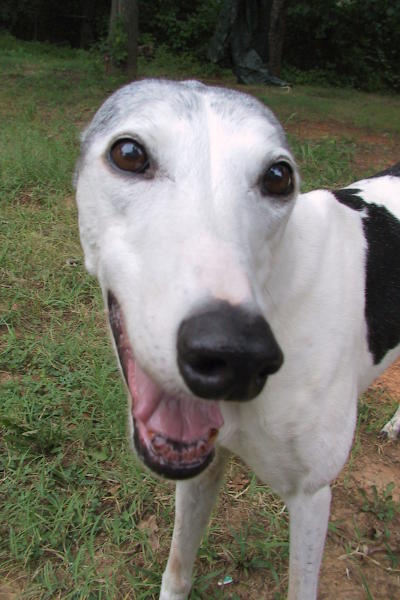
[One of those dogs became The Girlfriend’s pet for years, by the way. Despite the fact that they all came in at once into a “kill” shelter, only a couple of them were euthanized due to extremely poor health, and most were adopted.]
Now we get to the actual harm that the “no kill” ideology does, and like I said, exactly counter to what is actually effective. Believe me, the vast majority of people think “no kill” shelters are the way to go, actively denigrating those shelters that do not adhere to such a policy, despite the fact that it’s completely impossible. The overall beliefs seem to be that, if shelters were done right, all of them could be “no kill” – those that don’t “just want to kill animals” (that’s in quotes because I’ve heard this directly more than once,) or are trying to save money, or don’t care about the animals, or various other demonizations that make the operators subhuman. We’re a species that thinks in terms of opposites, so when there are “no kill” shelters, then all the others must be “killers” of course – just like you have gluten-free yogurt, so any that doesn’t say this must have gluten in it (gluten is not only a non-issue unless you have a very specific and rare disorder, it’s found in wheat and so isn’t in yogurt anyway, but it’s exactly that kind of stupidity that prevails in marketing, and “no kill” is a marketing term and nothing else; even the word “kill” is chosen for its impact.) Not to mention, animals are remarkably polarizing, and people get all frothy really quickly – and not very rational. But here’s part one: as long as people believe that things are under control, that such “no kill” shelters exist to make everything hunky-dory, that their own animal is assured a wonderful life when they give it up (including, and this is a big thing, unwanted litters,) then the problem doesn’t really exist.
That’s part two: the problem is, very simply, too many animals to find homes for. I started off quoting those numbers for a reason, because they’re overwhelming, all across our country and in most others besides. Unwanted litters, pets that “aren’t quite what I wanted,” situations where it’s easier to get rid of a pet, animals that aren’t interesting or fun or cute anymore, and so on – they all add up, hugely. And the only way that it’s going to get better is to reduce these numbers. That means spaying or neutering all pets. That means no designer pets or breeding programs (cross-bred animals have way fewer health problems than pure-bred anyway, and what the fuck do you think “pure-bred” even means, anyway? Do you think there’s some kind of genetic superiority among animals, and it reflects on you to own one?) That means no impulse buys or superficial considerations over getting a pet – including how cute it was in a goddamn movie. That means controlling the animal populations on farms and rural areas. That means an animal is for life, a companion that stays with you through thick and thin – friends aren’t ‘disposable,’ especially not when you never did the research to see just what ownership entailed for that breed. And it’s not until everyone is on board with this idea that it’s going to change.
This flies in the face of human desires. There’s no simple solution, no one direction to point fingers, no class of person or particular agency (“kill shelters”) to demonize, no one place to make donations to ‘fix’ the problem; in short, no way to feel superior. We just don’t like it when we can’t say, “All you have to do is this,” and then feel like we’ve accomplished something. The problems are cultural, and systemic.
And none of this is helped by the kind of knee-jerk emotional responses that dominate our attitudes to animal welfare. Animals – the cute, cuddly ones anyway – are our child substitutes, and can trigger our base instincts in countless ways, most of which we try to pretend are ‘rational;‘ this underlies so many things like veganism and anti-fur campaigns and insistence on free-range whatevers and on and on and on. I’m not saying there’s anything wrong in particular with any of these, but use them as examples of how humans can get ridiculously and blindly emotional over the issues, more so than any given situation warrants. It’s way back in our hind-brains, and it has the ability to skew everything we do or believe. And of course, there’s no shortage of organizations that happily prey upon this trait, asking for money while having no actual solution that could possibly work.
Which of course means that the organizations, the advocacy groups, and the outright attitudes that really are aimed towards fixing all of this don’t get the attention; worse, they’re often considered the enemy, and are labeled with attributes that simply don’t belong. You might notice that I’m not providing you with places that are effective to give your money to; I want you to figure this out on your own. And money certainly helps, but the more effective solution is attitude and advocacy; that means us, our efforts, our attitudes, our behavior. We’ve got an entire culture to change, and it doesn’t happen with finger-pointing.
* * * * *
Some posts regarding, or inspired by, my sheltering days:
More than a few of the Amateur Naturalist posts
And, for a bit more animal-related philosophy, Animal ethics





















































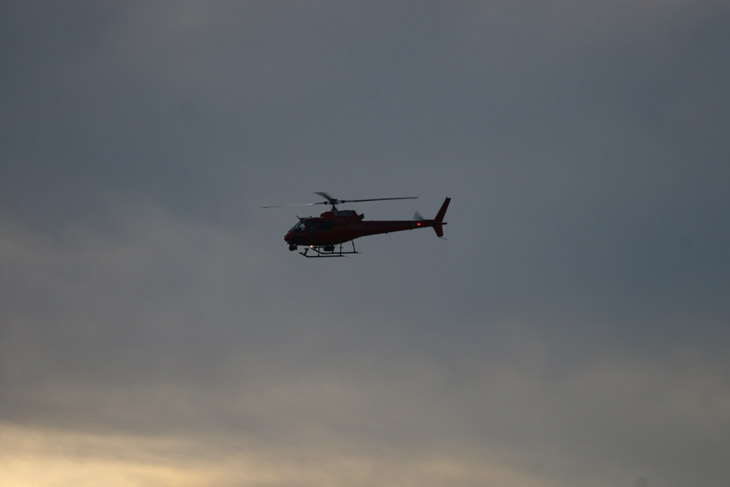

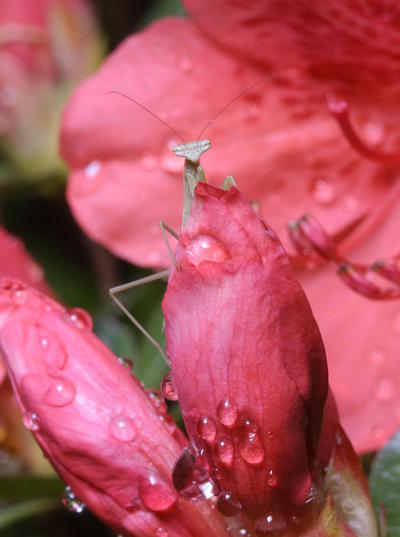 You ever do one of those projects big enough that there’s no real “Done!” feeling? You know, there are enough details to miss, enough functions to check, that you’re never sure you got them all, and there’s no real point when you’re completely confident that you’ve finished? That’s how I feel about website updates.
You ever do one of those projects big enough that there’s no real “Done!” feeling? You know, there are enough details to miss, enough functions to check, that you’re never sure you got them all, and there’s no real point when you’re completely confident that you’ve finished? That’s how I feel about website updates.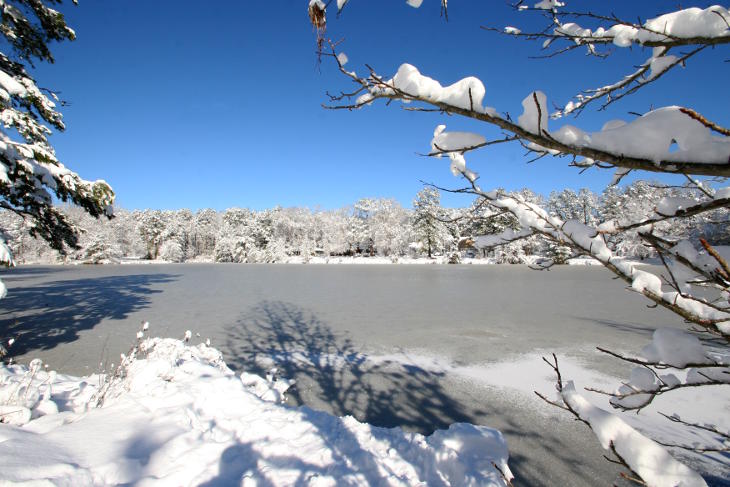
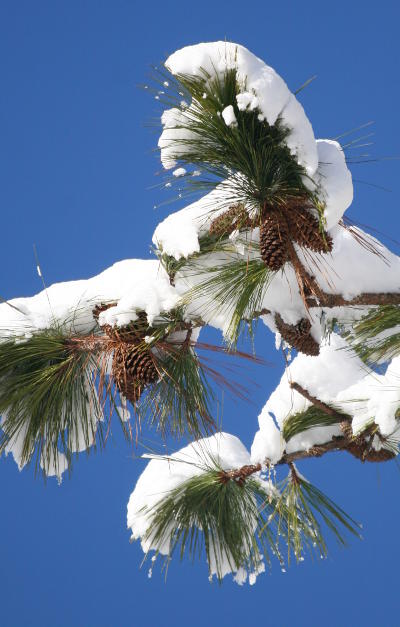 In fact, while the temperature was lower this morning than it was during the storm yesterday, the sun was doing more than its part and got a head start on melting this all off, but it’s got a long ways to go. Notably though, when I was out in the direct sunlight, I actually started getting a bit hot, and I think I may have picked up a little color today; granted, only on my face, but that’s all anyone’s going to see of me for a few months anyway. I can save a little on the spray-tan.
In fact, while the temperature was lower this morning than it was during the storm yesterday, the sun was doing more than its part and got a head start on melting this all off, but it’s got a long ways to go. Notably though, when I was out in the direct sunlight, I actually started getting a bit hot, and I think I may have picked up a little color today; granted, only on my face, but that’s all anyone’s going to see of me for a few months anyway. I can save a little on the spray-tan.
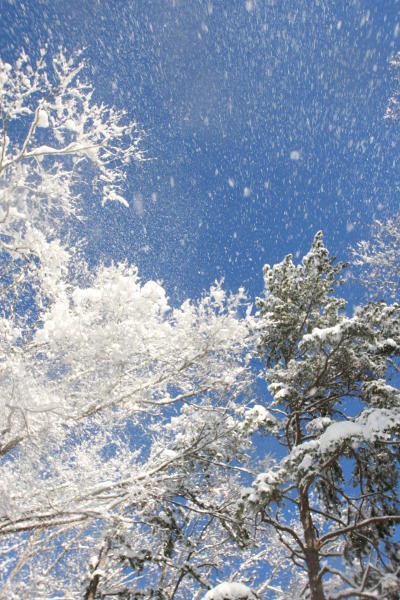 It should be obvious that I under-exposed the above image, by 1 1/3 stops, in order to keep the sun’s glare from overpowering the sky, and I touched out a little bit of lens flare too – nothing very serious. More curious is the warped starburst around the sun, which I’m guessing is an artifact of the aspherical lens.
It should be obvious that I under-exposed the above image, by 1 1/3 stops, in order to keep the sun’s glare from overpowering the sky, and I touched out a little bit of lens flare too – nothing very serious. More curious is the warped starburst around the sun, which I’m guessing is an artifact of the aspherical lens. 
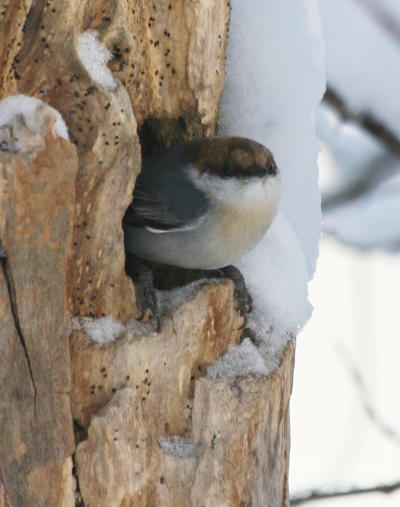 That’s a brown-headed nuthatch (Sitta pusilla,) a bird that I’ve never seen in the wild, though I’d handled one during my wildlife rehab days. It was, apparently, doing some work on its nesting hollow, which is quite gratifying to see since this is within easy access and visibility (if not exactly at the best sun angle.) I had the chance for just one frame before it hopped from the opening and flew up high in a nearby tree, and I knew it wasn’t likely to come back down while I stood there, so I quietly moved on. My intention was to return a couple of minutes later to see if I could get a few more images of it, and I amused myself with more landscape pics before I made my way back, getting the 100-300 L lens affixed before I came into range, and watching the opening carefully. My efforts paid off nicely.
That’s a brown-headed nuthatch (Sitta pusilla,) a bird that I’ve never seen in the wild, though I’d handled one during my wildlife rehab days. It was, apparently, doing some work on its nesting hollow, which is quite gratifying to see since this is within easy access and visibility (if not exactly at the best sun angle.) I had the chance for just one frame before it hopped from the opening and flew up high in a nearby tree, and I knew it wasn’t likely to come back down while I stood there, so I quietly moved on. My intention was to return a couple of minutes later to see if I could get a few more images of it, and I amused myself with more landscape pics before I made my way back, getting the 100-300 L lens affixed before I came into range, and watching the opening carefully. My efforts paid off nicely.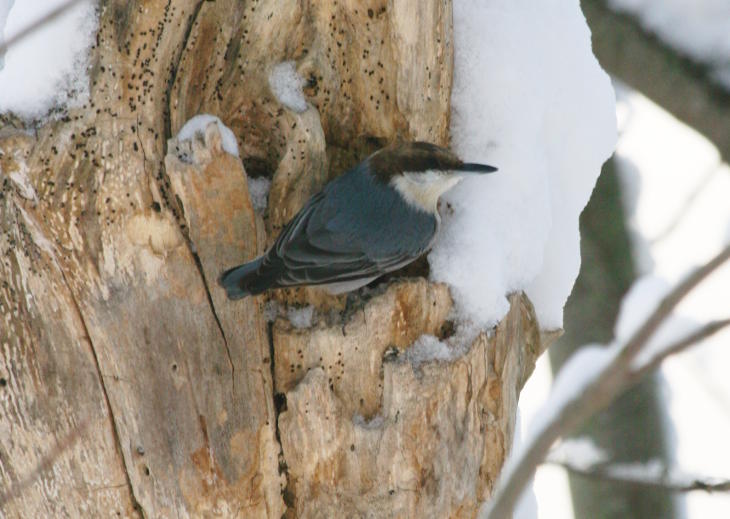
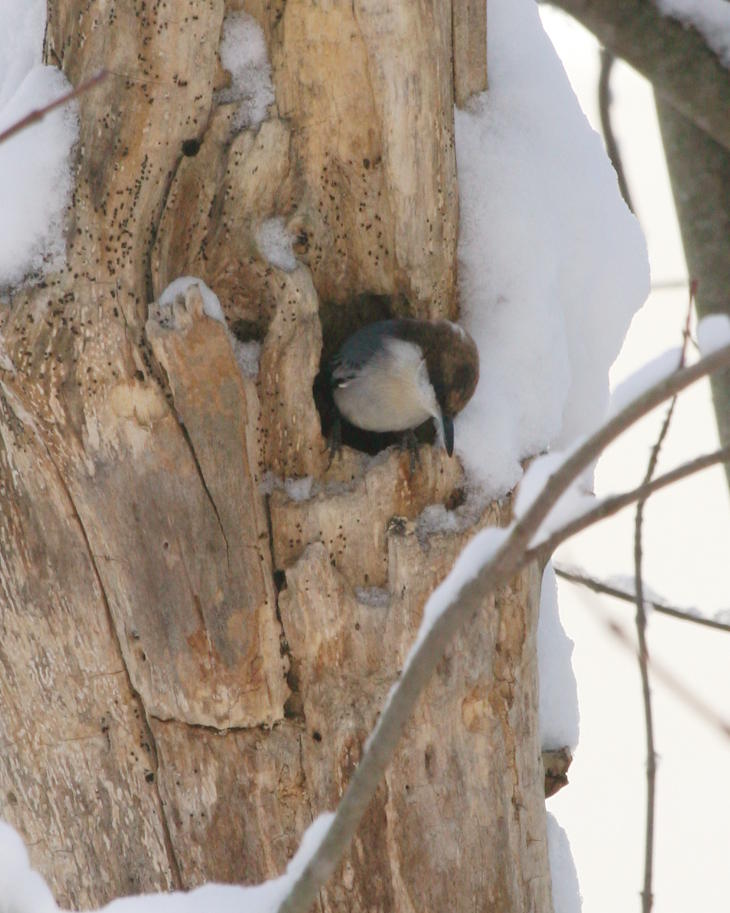
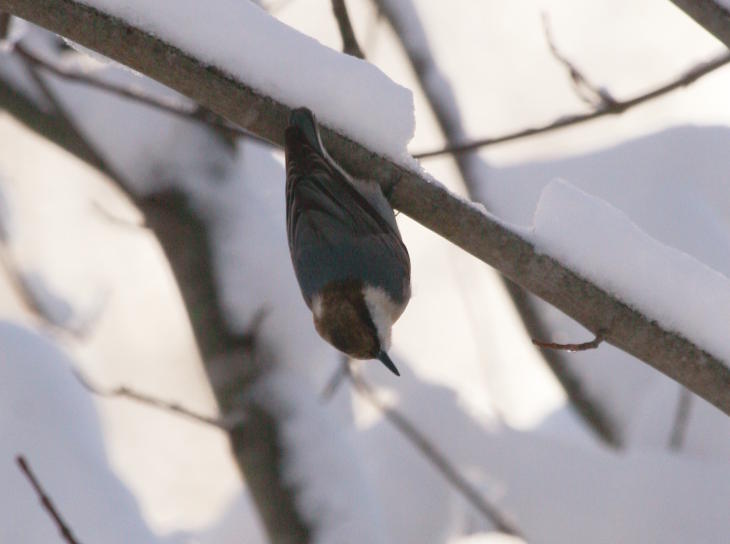
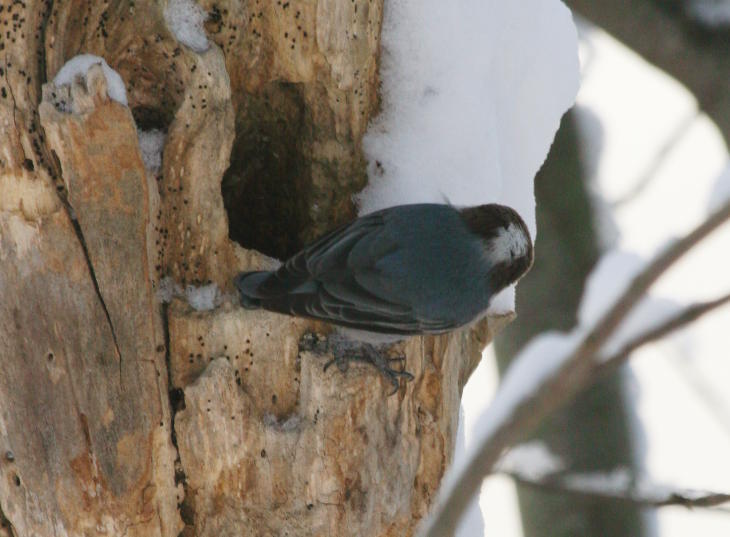
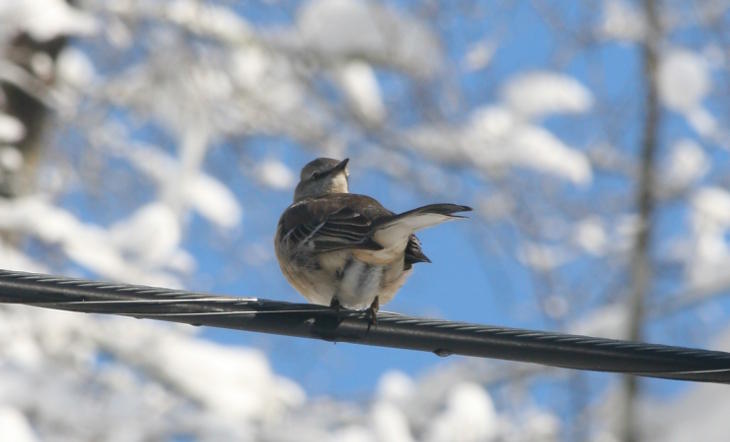
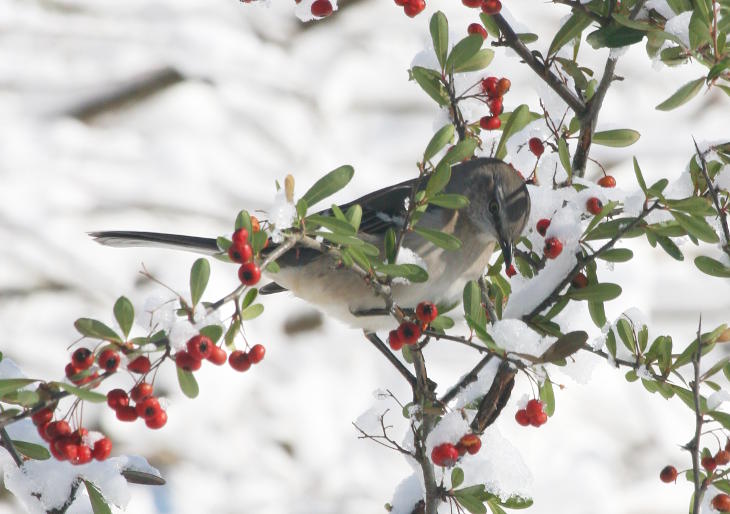
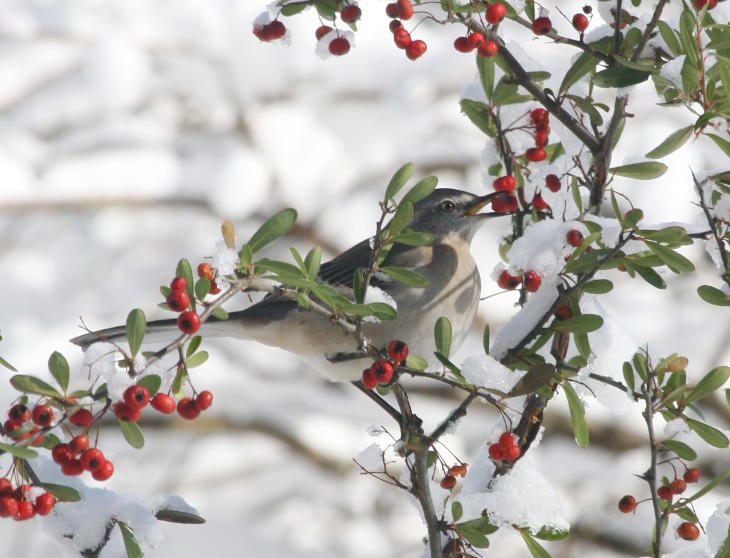
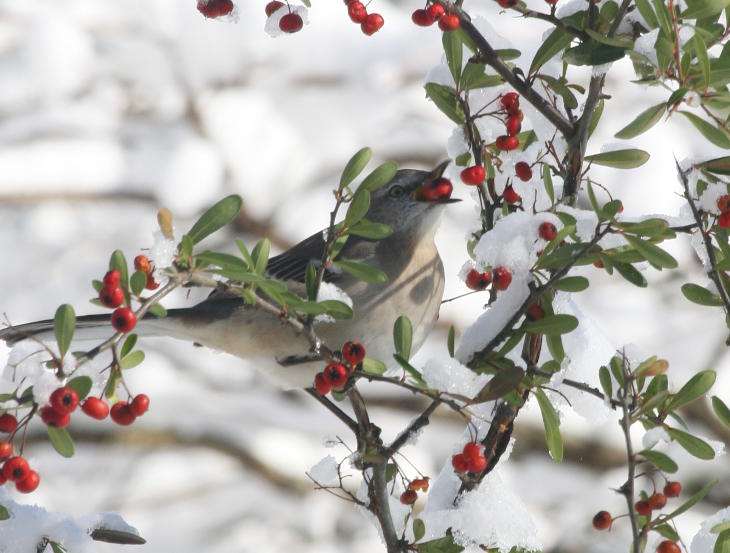
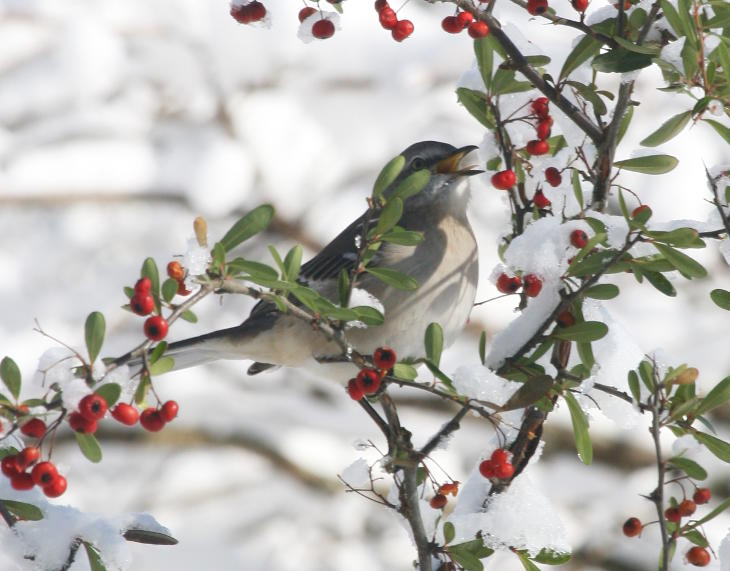
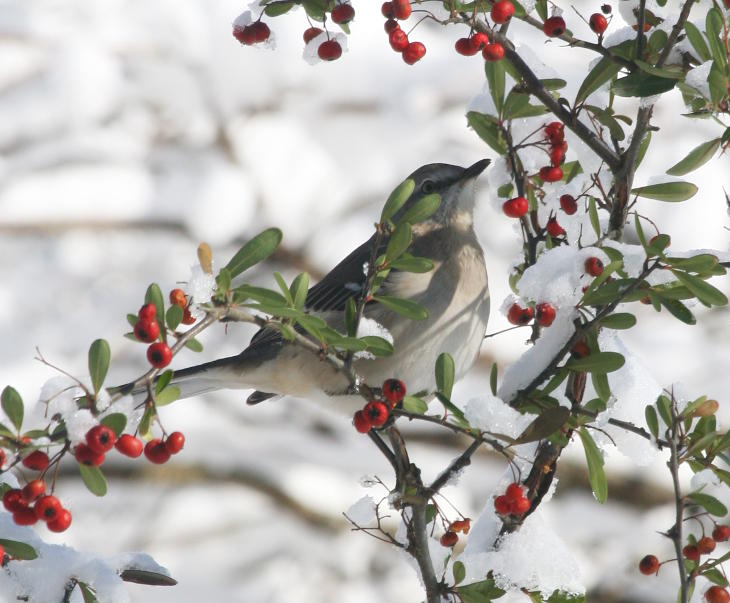
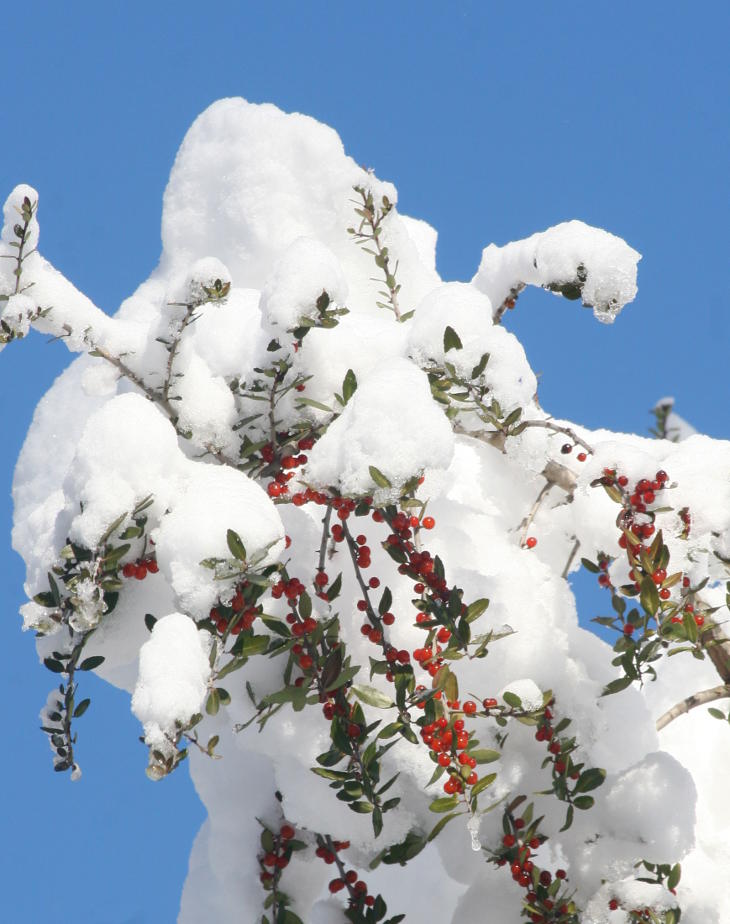
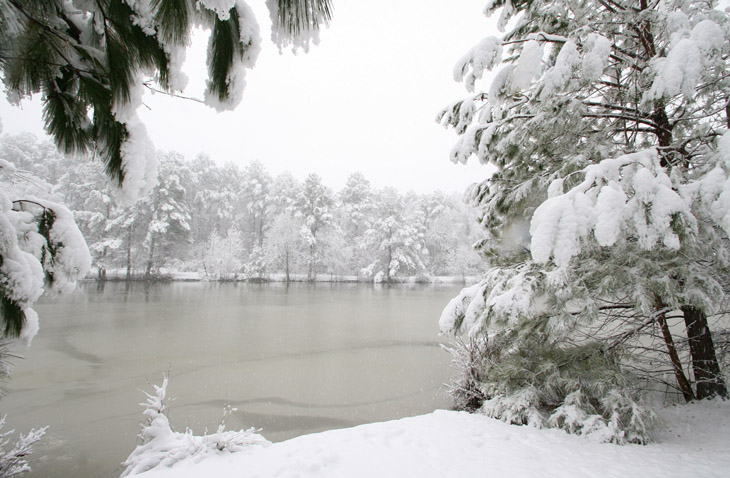
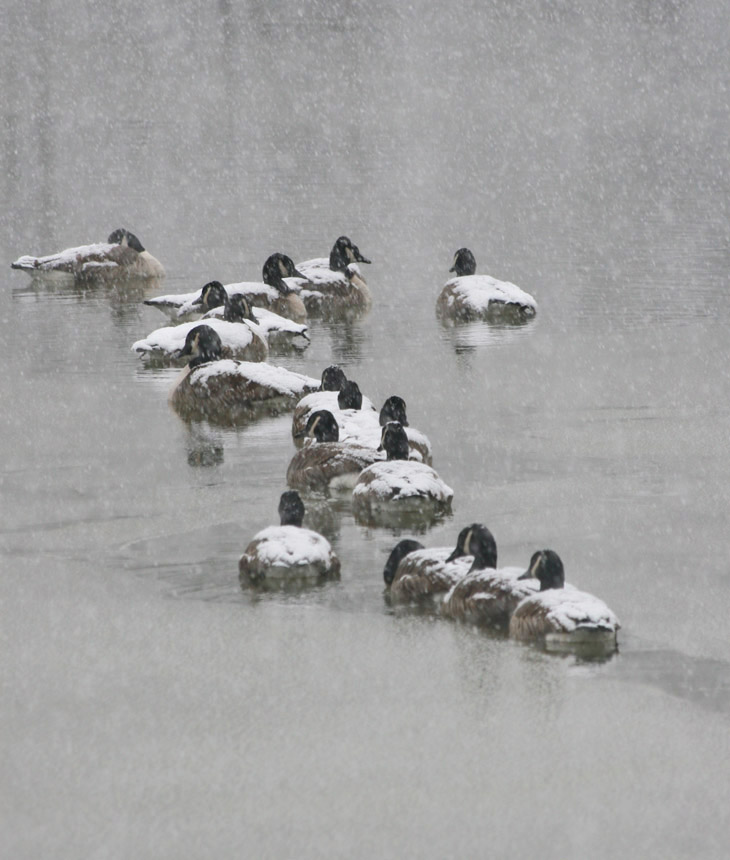

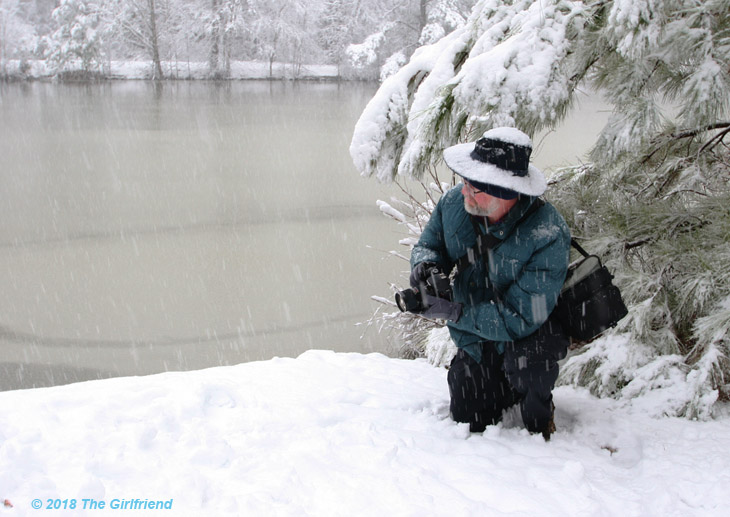

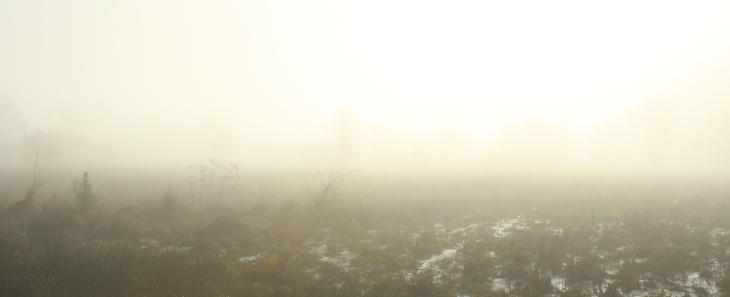
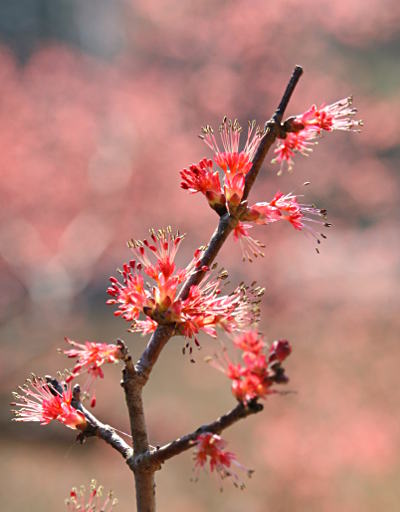 This month’s pick is again applicable, because it’s
This month’s pick is again applicable, because it’s 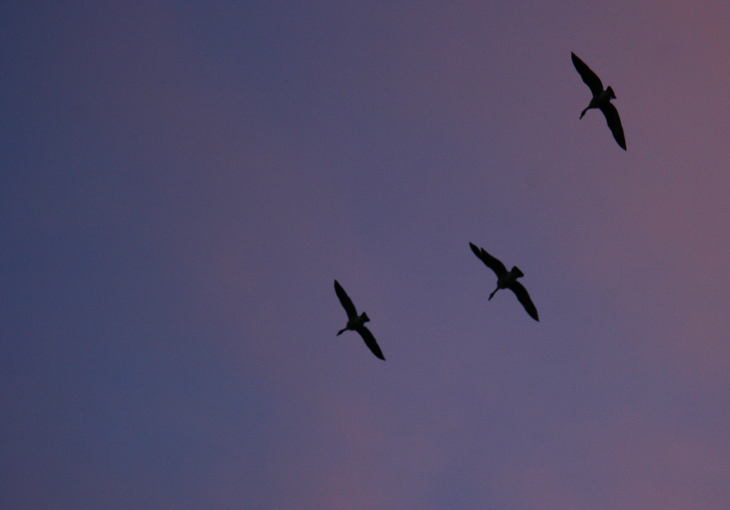
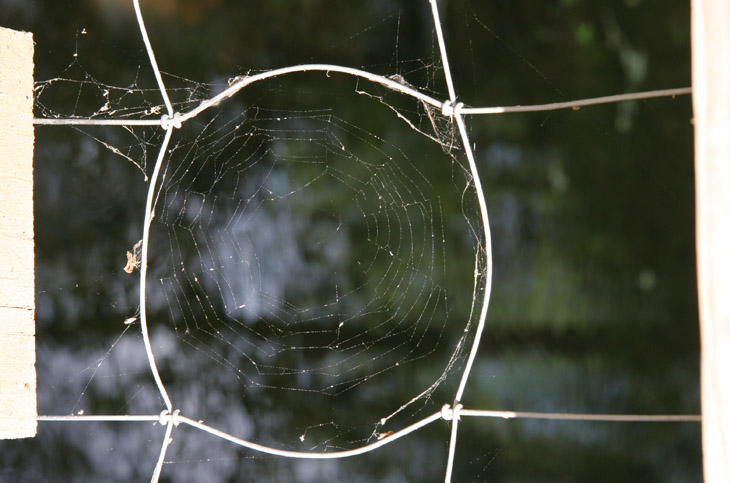


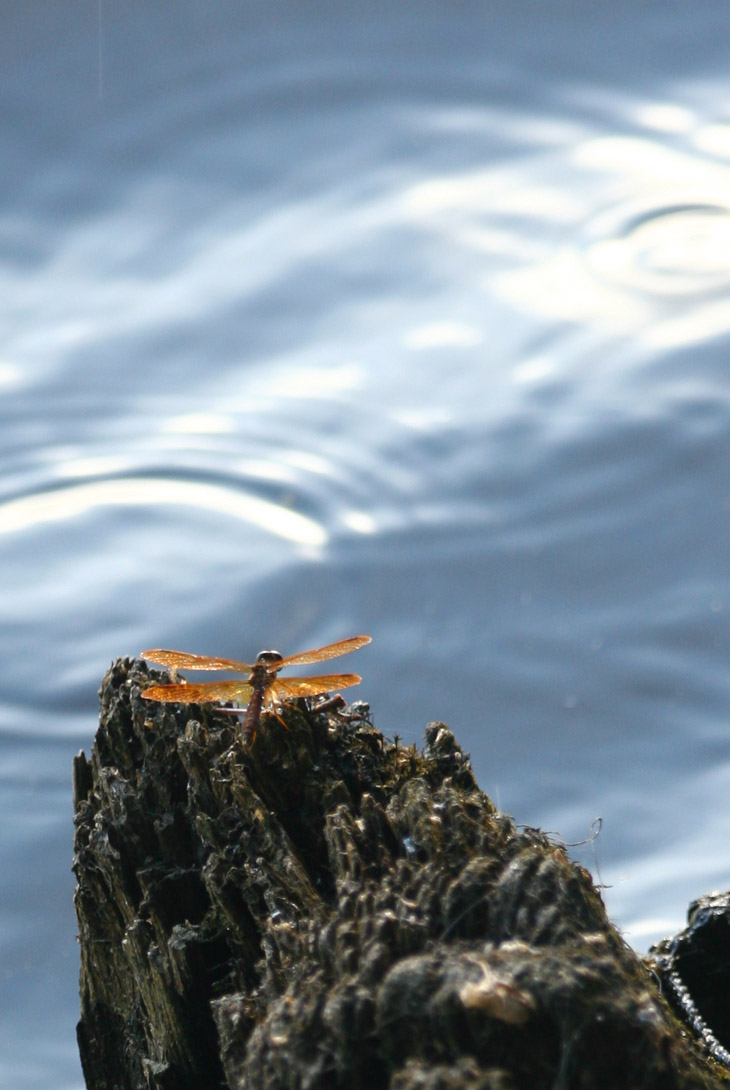
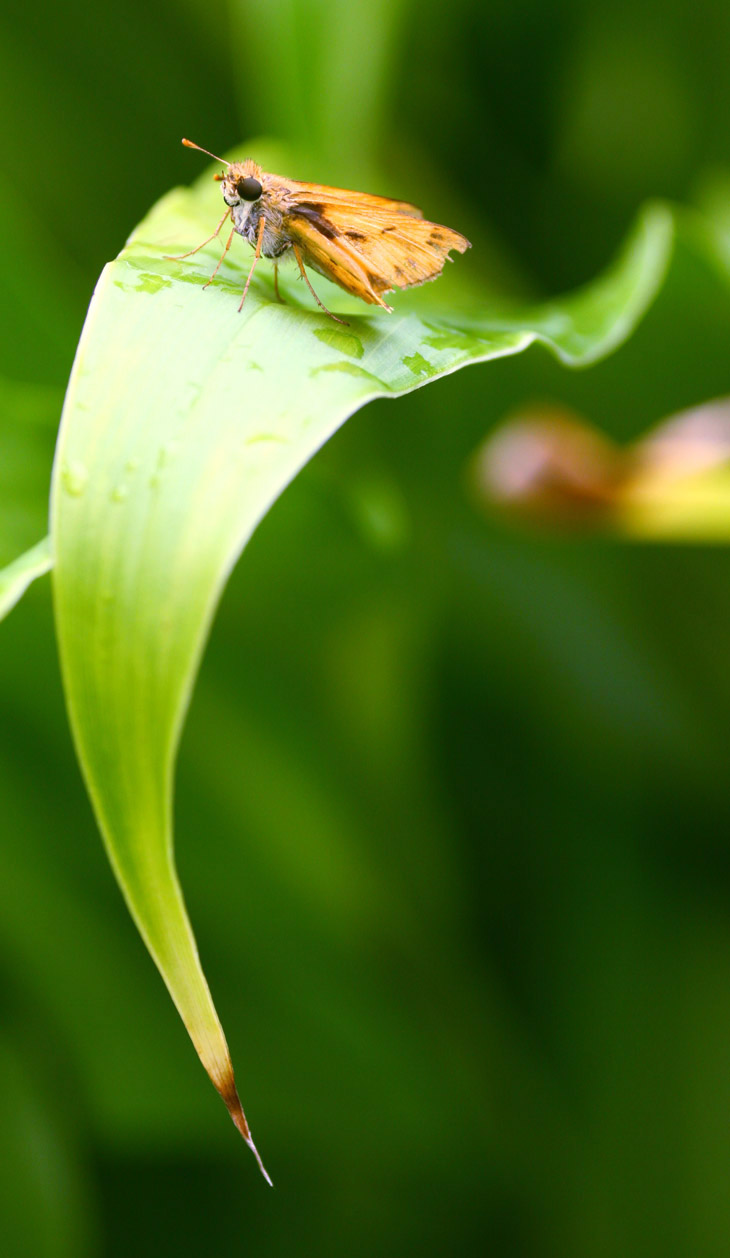
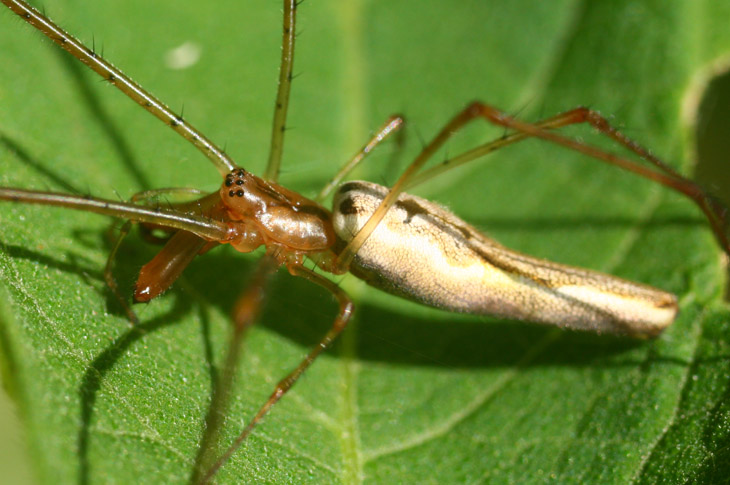
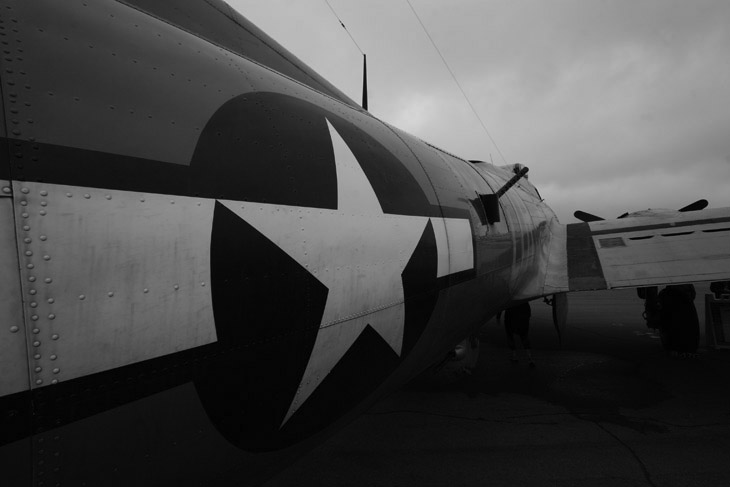

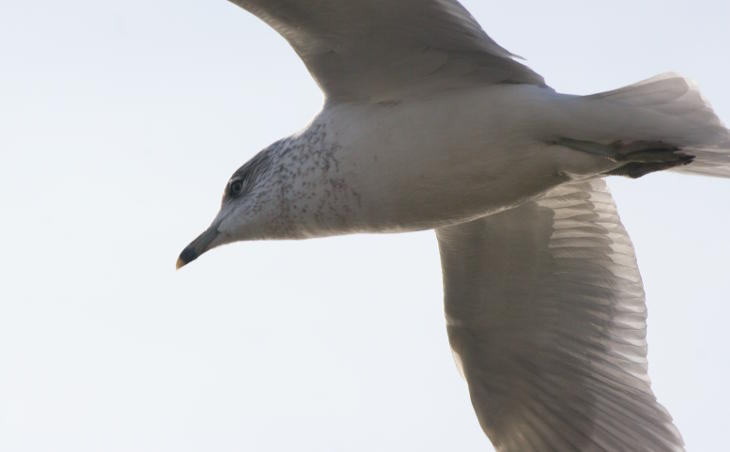
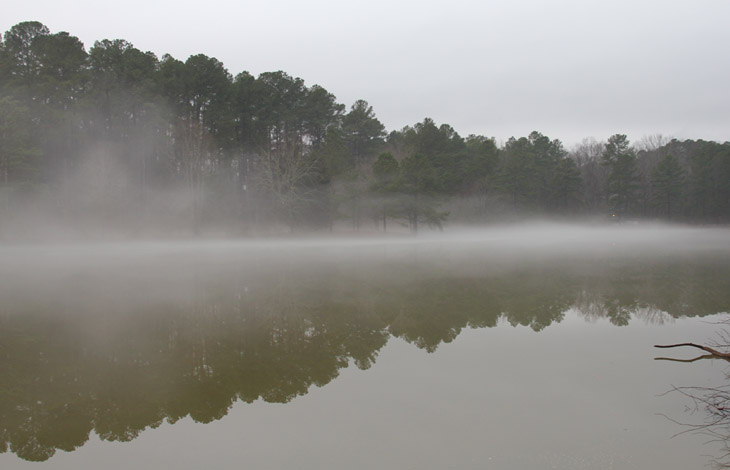
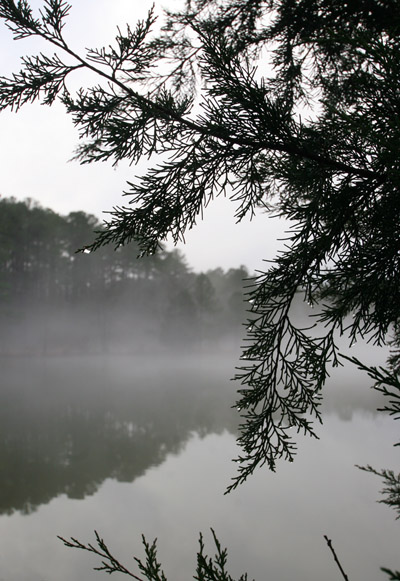 The next morning the fog came in again, so I did a little bit longer session then. The conditions were a little misty and there was even a brief and very light rain, nothing that would penetrate the camera bag much less force me back indoors, but it added some more humidity to the shots that I was taking, so, good! I won’t include a lot of exposition here, since I’m still busy with two big projects (both of which you’ll hear about when I finish them,) so I’ll throw them up here just to prove that I’m still alive, my version of holding a current newspaper I suppose. Ask you grandmother what a newspaper was…
The next morning the fog came in again, so I did a little bit longer session then. The conditions were a little misty and there was even a brief and very light rain, nothing that would penetrate the camera bag much less force me back indoors, but it added some more humidity to the shots that I was taking, so, good! I won’t include a lot of exposition here, since I’m still busy with two big projects (both of which you’ll hear about when I finish them,) so I’ll throw them up here just to prove that I’m still alive, my version of holding a current newspaper I suppose. Ask you grandmother what a newspaper was…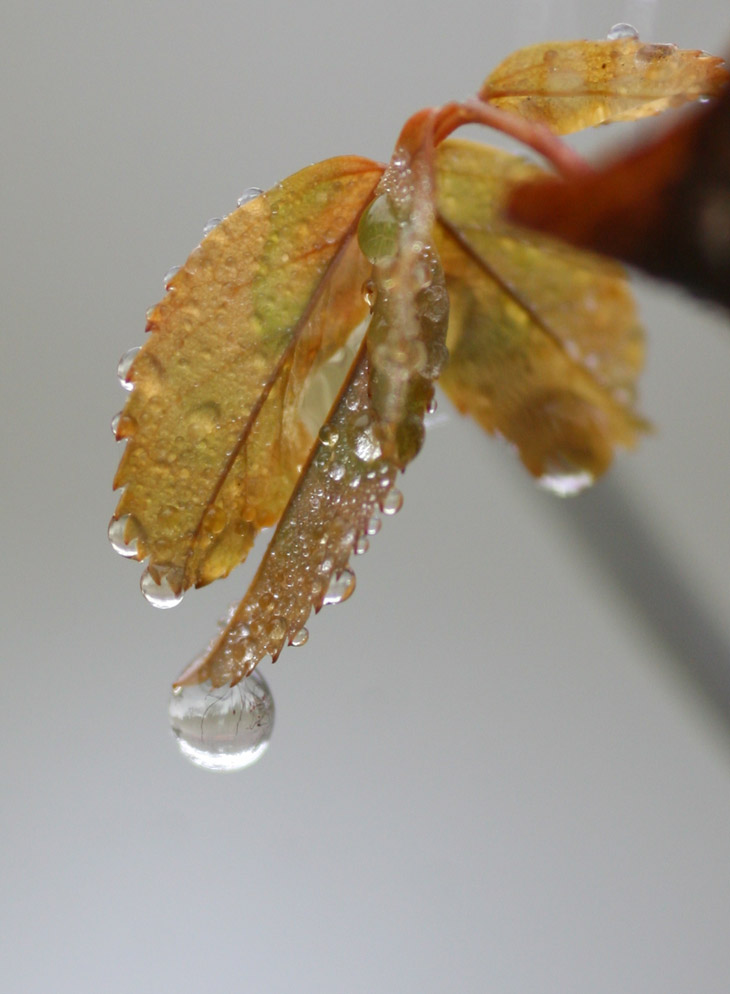
 I was shooting handheld with no flash in some fairly low light, so doing the extreme macro stuff was going to be difficult, but I still managed to capture a little bit of the scene in one of the hanging drops, above. I had to be very careful when doing some of these, because going in close to the subject meant a high likelihood of bumping a branch, and even if it wasn’t a branch on the same plant as the subject, the two plants might still be in contact and could thus share the vibrations, which would likely dislodge any nice hanging drops. This happened more than once, despite my efforts, so you will just have to imagine the breathtaking images that I never captured due to my clumsiness.
I was shooting handheld with no flash in some fairly low light, so doing the extreme macro stuff was going to be difficult, but I still managed to capture a little bit of the scene in one of the hanging drops, above. I had to be very careful when doing some of these, because going in close to the subject meant a high likelihood of bumping a branch, and even if it wasn’t a branch on the same plant as the subject, the two plants might still be in contact and could thus share the vibrations, which would likely dislodge any nice hanging drops. This happened more than once, despite my efforts, so you will just have to imagine the breathtaking images that I never captured due to my clumsiness.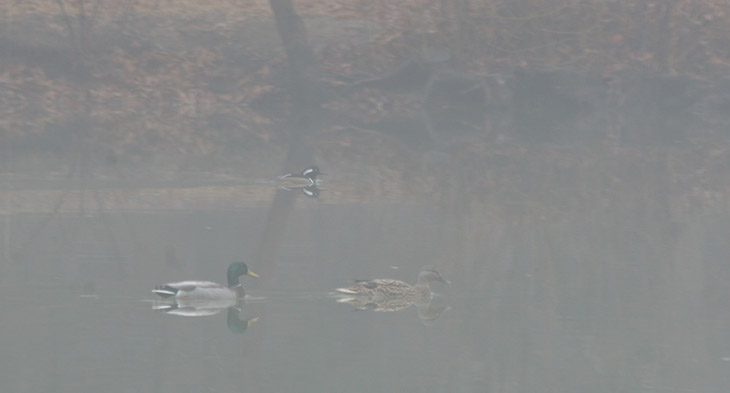
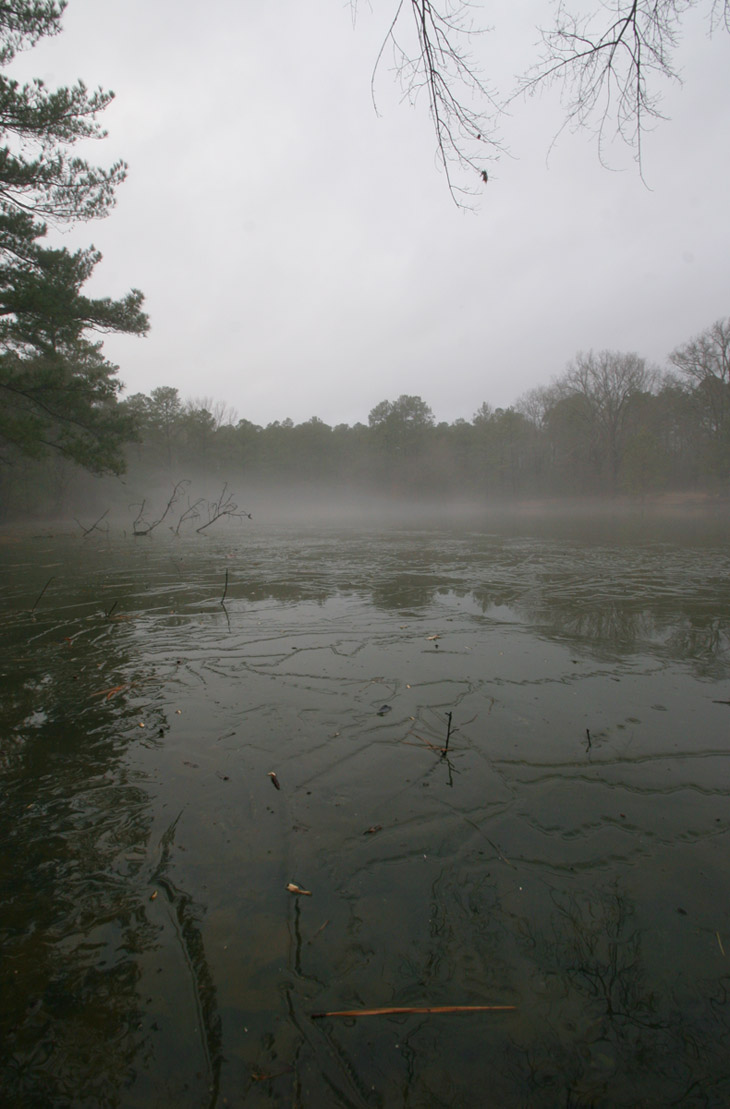
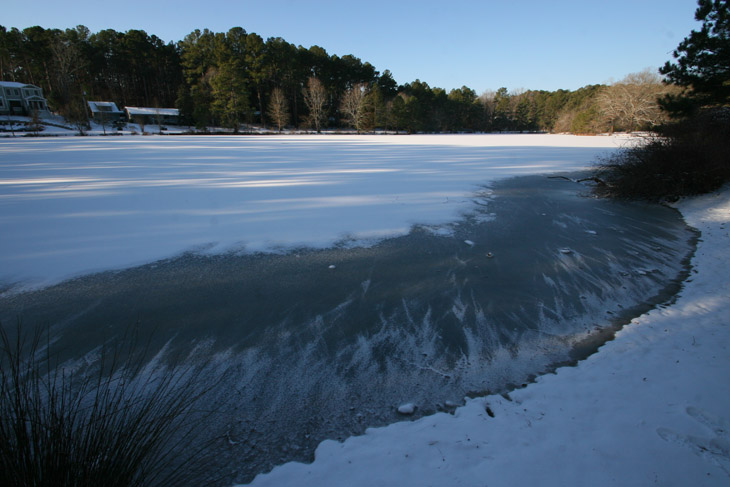
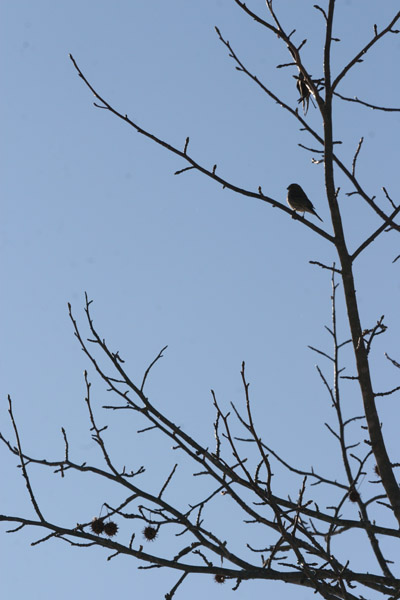 I’ve mentioned before, I’m not much of a songbird person, but there isn’t a lot else to photograph right now, and they were notably active around the pond. Most of them were reluctant to let me approach very closely, but I took what opportunities I could. Most of them were also trying their damnedest to remain within the thicket of branches at every opportunity, so nice portraits were difficult to obtain.
I’ve mentioned before, I’m not much of a songbird person, but there isn’t a lot else to photograph right now, and they were notably active around the pond. Most of them were reluctant to let me approach very closely, but I took what opportunities I could. Most of them were also trying their damnedest to remain within the thicket of branches at every opportunity, so nice portraits were difficult to obtain. 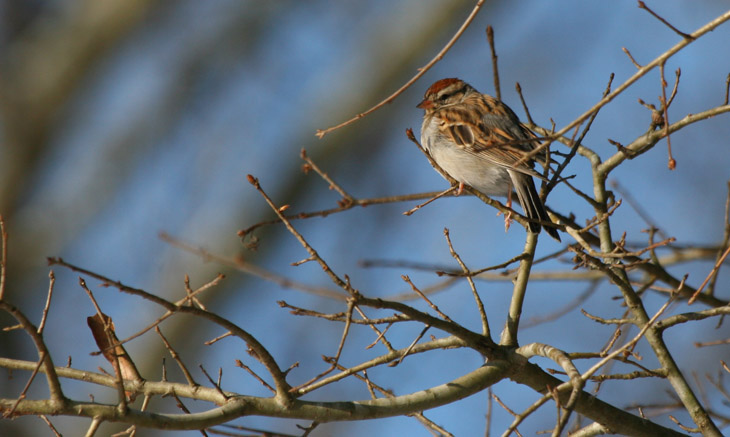
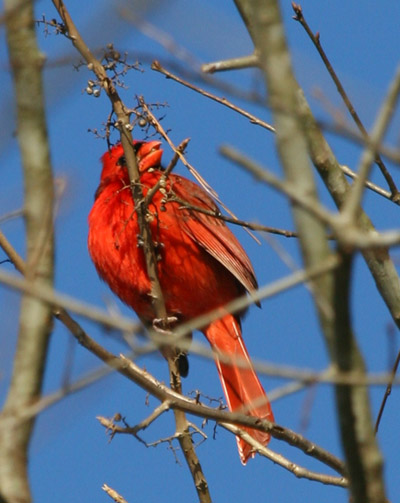 Meanwhile, this Northern cardinal (Cardinalis cardinalis) absolutely refused to adopt a striking pose or even peek out from behind the branches, but it wasn’t until I downloaded the pics and had a nice close look that I realized this was because it was feeding on some diminutive unidentified berries. Like I said, the patches of snow on branches were virtually gone, so no opportunity for a nice composition with the red cardinal, blue sky, white snow, and perhaps deep green pine needles (about the only use they can be put to.) But at least the light angle was decent. That’s not really enough to save the image, is it? Fine – be that way.
Meanwhile, this Northern cardinal (Cardinalis cardinalis) absolutely refused to adopt a striking pose or even peek out from behind the branches, but it wasn’t until I downloaded the pics and had a nice close look that I realized this was because it was feeding on some diminutive unidentified berries. Like I said, the patches of snow on branches were virtually gone, so no opportunity for a nice composition with the red cardinal, blue sky, white snow, and perhaps deep green pine needles (about the only use they can be put to.) But at least the light angle was decent. That’s not really enough to save the image, is it? Fine – be that way.
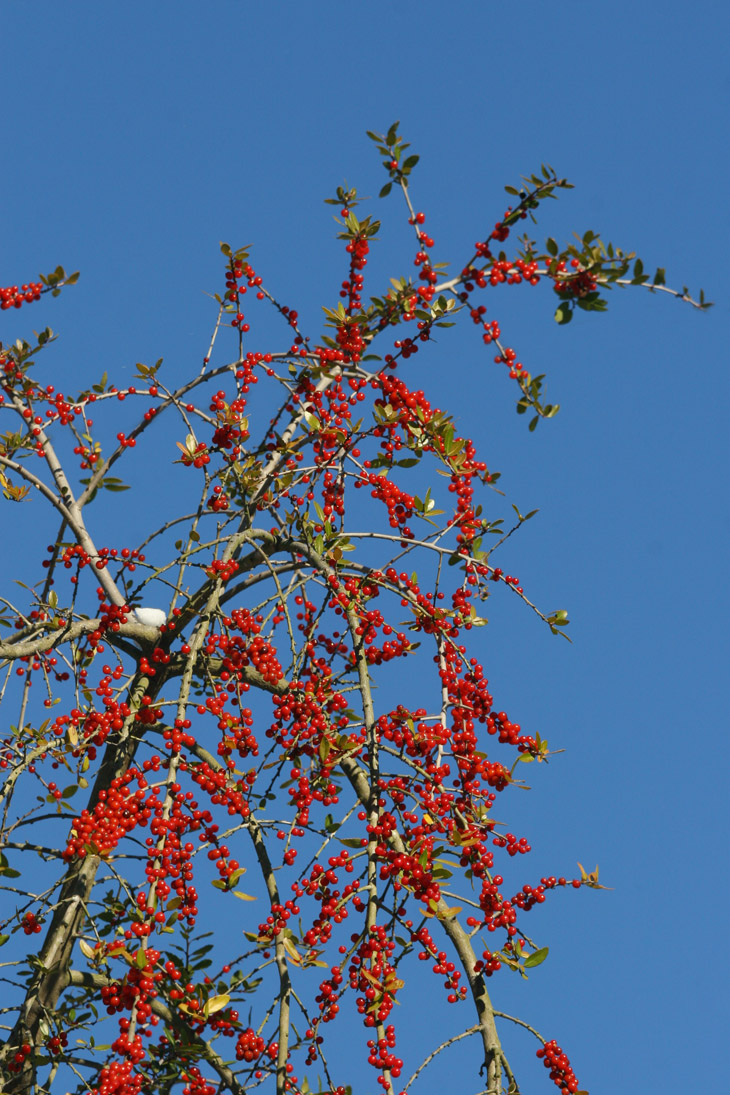



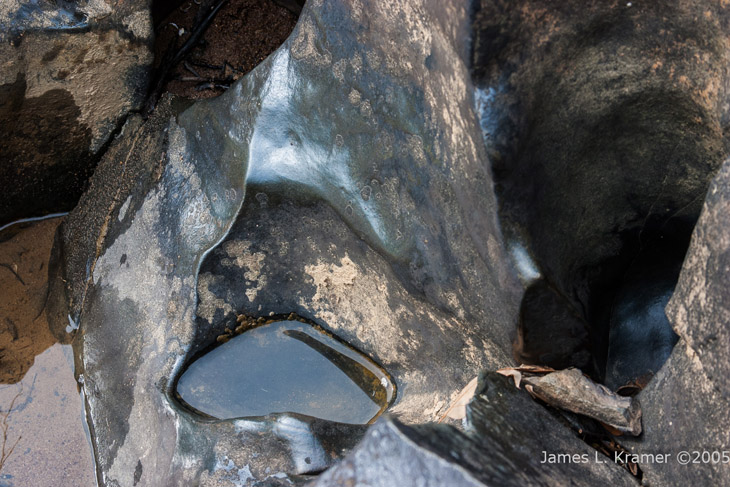
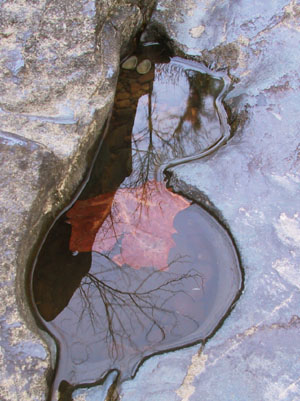 One of the more notable traits of some of the rocks in the river, southeast of the bridge, was their curious nature: sharp-edged and quite hard, apparently, but seemingly shaped by the water with some very fluid curves to them. I remember (or not) being suspicious of their shapes, not really believing the water had done that, yet not being sure what was responsible for it. But while there, I got the fartistic image (I believe) at right that I’ve used here before. And I’m almost positive that the very spot was virtually right behind me in the pic below that Jim took without my express permission or knowledge. I’m pretty sure that the camera (a Canon Pro 90 IS, my first digital) is braced against my knee for a slow exposure to capture the running water, and is one of at least two bodies that I had with me, another being the Elan IIe loaded with monochrome film. I would have believed that I had one more with me, the EOS 3 loaded with slide film, but of course that’s a huge question now isn’t it?
One of the more notable traits of some of the rocks in the river, southeast of the bridge, was their curious nature: sharp-edged and quite hard, apparently, but seemingly shaped by the water with some very fluid curves to them. I remember (or not) being suspicious of their shapes, not really believing the water had done that, yet not being sure what was responsible for it. But while there, I got the fartistic image (I believe) at right that I’ve used here before. And I’m almost positive that the very spot was virtually right behind me in the pic below that Jim took without my express permission or knowledge. I’m pretty sure that the camera (a Canon Pro 90 IS, my first digital) is braced against my knee for a slow exposure to capture the running water, and is one of at least two bodies that I had with me, another being the Elan IIe loaded with monochrome film. I would have believed that I had one more with me, the EOS 3 loaded with slide film, but of course that’s a huge question now isn’t it?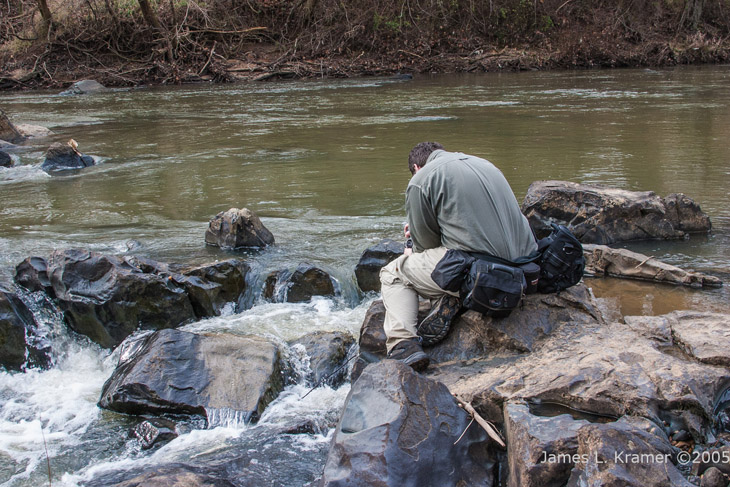
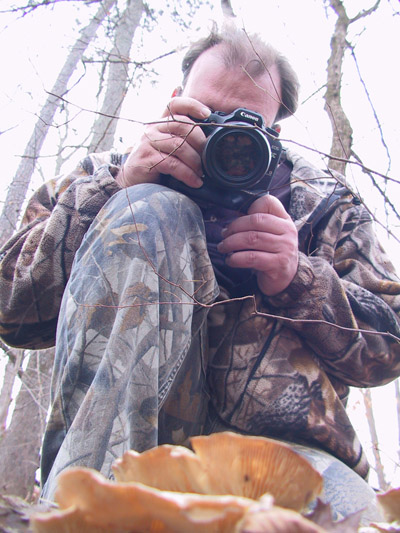 I could recognize the viewfinder of the Pro 90 IS in the image above, but also have the photo at left of Jim himself taken during that outing, where I used the flip-out LCD panel to do a very low angle shot from beneath a mushroom, aiming up at Jim. Whether he actually snapped a frame during this time or just posed obligingly I’m not sure, naturally. I am, in fact, including this photo just to get back at Jim a little bit because of what he did to me here. Ha! Didn’t remember me taking this photo, did you Jim? Ha!
I could recognize the viewfinder of the Pro 90 IS in the image above, but also have the photo at left of Jim himself taken during that outing, where I used the flip-out LCD panel to do a very low angle shot from beneath a mushroom, aiming up at Jim. Whether he actually snapped a frame during this time or just posed obligingly I’m not sure, naturally. I am, in fact, including this photo just to get back at Jim a little bit because of what he did to me here. Ha! Didn’t remember me taking this photo, did you Jim? Ha!